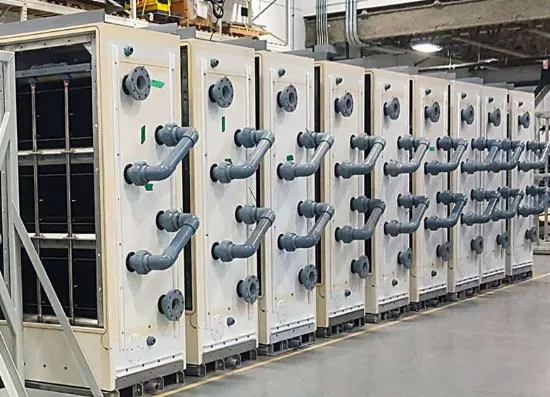
-
 Afrikaans
Afrikaans -
 Albanian
Albanian -
 Amharic
Amharic -
 Arabic
Arabic -
 Armenian
Armenian -
 Azerbaijani
Azerbaijani -
 Basque
Basque -
 Belarusian
Belarusian -
 Bengali
Bengali -
 Bosnian
Bosnian -
 Bulgarian
Bulgarian -
 Catalan
Catalan -
 Cebuano
Cebuano -
 China
China -
 China (Taiwan)
China (Taiwan) -
 Corsican
Corsican -
 Croatian
Croatian -
 Czech
Czech -
 Danish
Danish -
 Dutch
Dutch -
 English
English -
 Esperanto
Esperanto -
 Estonian
Estonian -
 Finnish
Finnish -
 French
French -
 Frisian
Frisian -
 Galician
Galician -
 Georgian
Georgian -
 German
German -
 Greek
Greek -
 Gujarati
Gujarati -
 Haitian Creole
Haitian Creole -
 hausa
hausa -
 hawaiian
hawaiian -
 Hebrew
Hebrew -
 Hindi
Hindi -
 Miao
Miao -
 Hungarian
Hungarian -
 Icelandic
Icelandic -
 igbo
igbo -
 Indonesian
Indonesian -
 irish
irish -
 Italian
Italian -
 Japanese
Japanese -
 Javanese
Javanese -
 Kannada
Kannada -
 kazakh
kazakh -
 Khmer
Khmer -
 Rwandese
Rwandese -
 Korean
Korean -
 Kurdish
Kurdish -
 Kyrgyz
Kyrgyz -
 Lao
Lao -
 Latin
Latin -
 Latvian
Latvian -
 Lithuanian
Lithuanian -
 Luxembourgish
Luxembourgish -
 Macedonian
Macedonian -
 Malgashi
Malgashi -
 Malay
Malay -
 Malayalam
Malayalam -
 Maltese
Maltese -
 Maori
Maori -
 Marathi
Marathi -
 Mongolian
Mongolian -
 Myanmar
Myanmar -
 Nepali
Nepali -
 Norwegian
Norwegian -
 Norwegian
Norwegian -
 Occitan
Occitan -
 Pashto
Pashto -
 Persian
Persian -
 Polish
Polish -
 Portuguese
Portuguese -
 Punjabi
Punjabi -
 Romanian
Romanian -
 Russian
Russian -
 Samoan
Samoan -
 Scottish Gaelic
Scottish Gaelic -
 Serbian
Serbian -
 Sesotho
Sesotho -
 Shona
Shona -
 Sindhi
Sindhi -
 Sinhala
Sinhala -
 Slovak
Slovak -
 Slovenian
Slovenian -
 Somali
Somali -
 Spanish
Spanish -
 Sundanese
Sundanese -
 Swahili
Swahili -
 Swedish
Swedish -
 Tagalog
Tagalog -
 Tajik
Tajik -
 Tamil
Tamil -
 Tatar
Tatar -
 Telugu
Telugu -
 Thai
Thai -
 Turkish
Turkish -
 Turkmen
Turkmen -
 Ukrainian
Ukrainian -
 Urdu
Urdu -
 Uighur
Uighur -
 Uzbek
Uzbek -
 Vietnamese
Vietnamese -
 Welsh
Welsh -
 Bantu
Bantu -
 Yiddish
Yiddish -
 Yoruba
Yoruba -
 Zulu
Zulu
Feb . 13, 2025 05:01
Back to list
Large Size Field Tanks
Navigating the expanding universe of chemical products for FRP (Fiber Reinforced Plastic) applications can be a challenging endeavor. FRP is widely recognized for its durability, lightweight nature, and resistance to corrosion, making it a prominent choice across various industries. Here’s an in-depth guide to understanding and selecting the right chemical products tailored for FRP applications, harnessing industry insights, extensive research, and authoritative expertise.
Surface treatments and coatings further complement these chemical products, ensuring the longevity and efficacy of FRP in demanding environments. Gel coats, often applied as an outermost layer, provide significant protection against environmental factors and mechanical wear. Innovative gel coat formulations focus on improving abrasion resistance and weathering performance, ensuring that FRP products maintain both appearance and functionality over time. Compliance with industry standards and environmental regulations epitomizes the trust and credibility of chemical products for FRP applications. Adhering to ISO and ASTM standards guarantees that products meet essential safety and quality benchmarks, instilling confidence in their application. Additionally, the increasing focus on environmentally sustainable practices has propelled the development of eco-friendly resin formulations that reduce VOC emissions and incorporate renewable materials, catering to the growing demand for green manufacturing solutions. In the dynamic landscape of FRP applications, collaboration with reputable suppliers and manufacturers is crucial. They provide invaluable experience and technical support, guiding the selection process and ensuring optimal integration of chemical components into fabrication processes. Transparent communication about the specific demands of a project ensures that the most appropriate chemical solutions are deployed, maximizing performance and economic efficiency. In conclusion, selecting the right chemical products for FRP applications demands a nuanced understanding of resin types, catalytic systems, additives, and their interplay within specific application environments. By emphasizing expertise, authority, and trustworthiness, you ensure that each component enhances the cumulative properties of FRP, aligning with industrial needs for durable, efficient, and sustainable solutions. Staying abreast of innovations and regulatory developments further empowers industry stakeholders to drive forward with confidence, setting new benchmarks for quality and performance in FRP applications.


Surface treatments and coatings further complement these chemical products, ensuring the longevity and efficacy of FRP in demanding environments. Gel coats, often applied as an outermost layer, provide significant protection against environmental factors and mechanical wear. Innovative gel coat formulations focus on improving abrasion resistance and weathering performance, ensuring that FRP products maintain both appearance and functionality over time. Compliance with industry standards and environmental regulations epitomizes the trust and credibility of chemical products for FRP applications. Adhering to ISO and ASTM standards guarantees that products meet essential safety and quality benchmarks, instilling confidence in their application. Additionally, the increasing focus on environmentally sustainable practices has propelled the development of eco-friendly resin formulations that reduce VOC emissions and incorporate renewable materials, catering to the growing demand for green manufacturing solutions. In the dynamic landscape of FRP applications, collaboration with reputable suppliers and manufacturers is crucial. They provide invaluable experience and technical support, guiding the selection process and ensuring optimal integration of chemical components into fabrication processes. Transparent communication about the specific demands of a project ensures that the most appropriate chemical solutions are deployed, maximizing performance and economic efficiency. In conclusion, selecting the right chemical products for FRP applications demands a nuanced understanding of resin types, catalytic systems, additives, and their interplay within specific application environments. By emphasizing expertise, authority, and trustworthiness, you ensure that each component enhances the cumulative properties of FRP, aligning with industrial needs for durable, efficient, and sustainable solutions. Staying abreast of innovations and regulatory developments further empowers industry stakeholders to drive forward with confidence, setting new benchmarks for quality and performance in FRP applications.
Next:
Related Products









